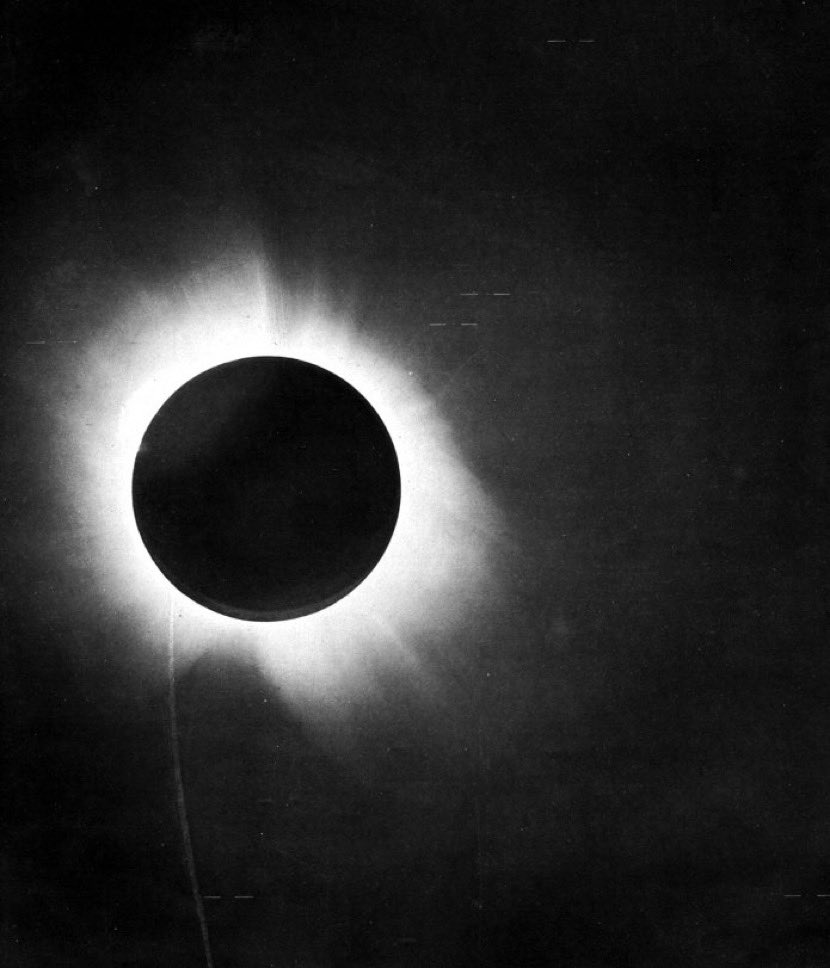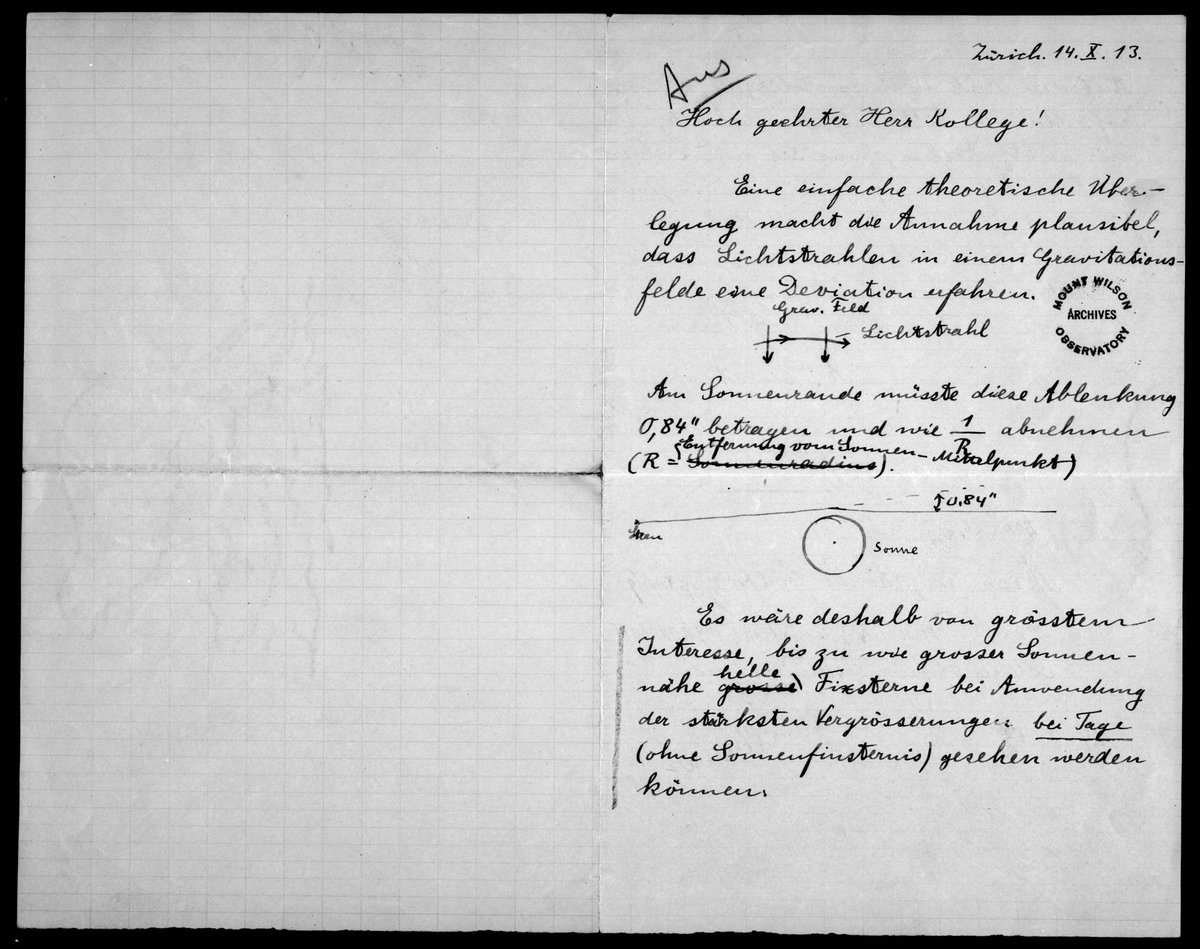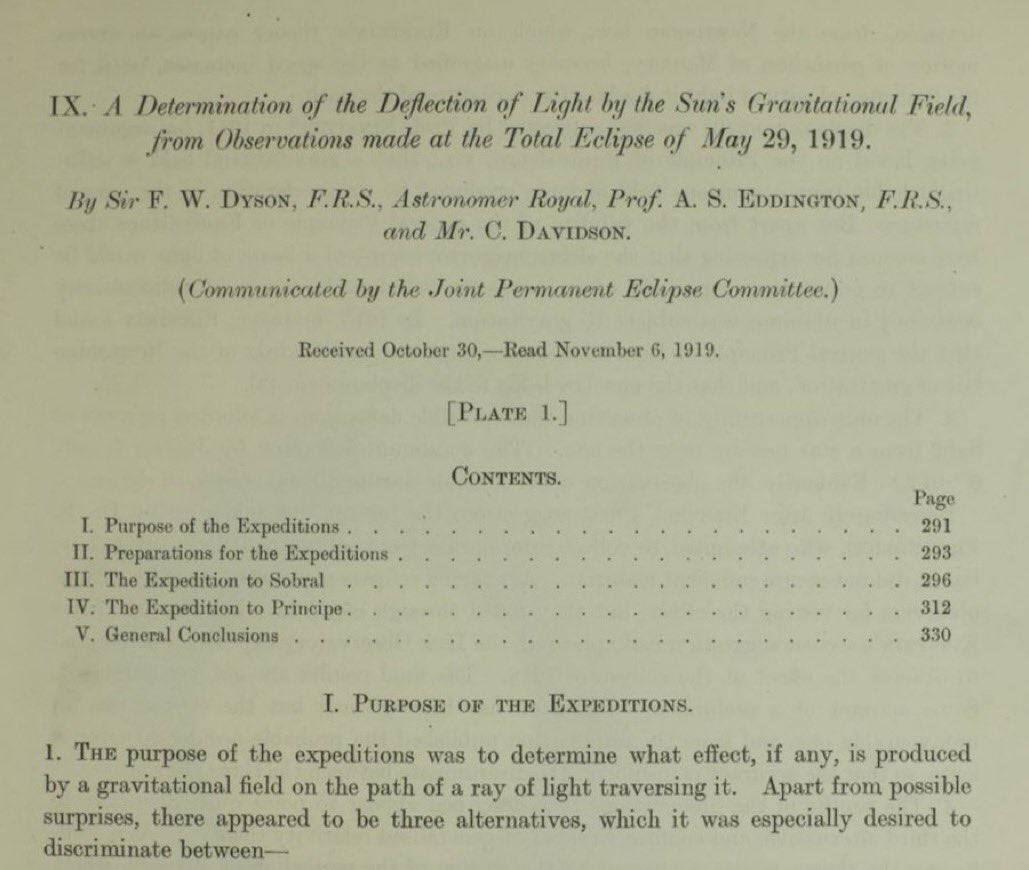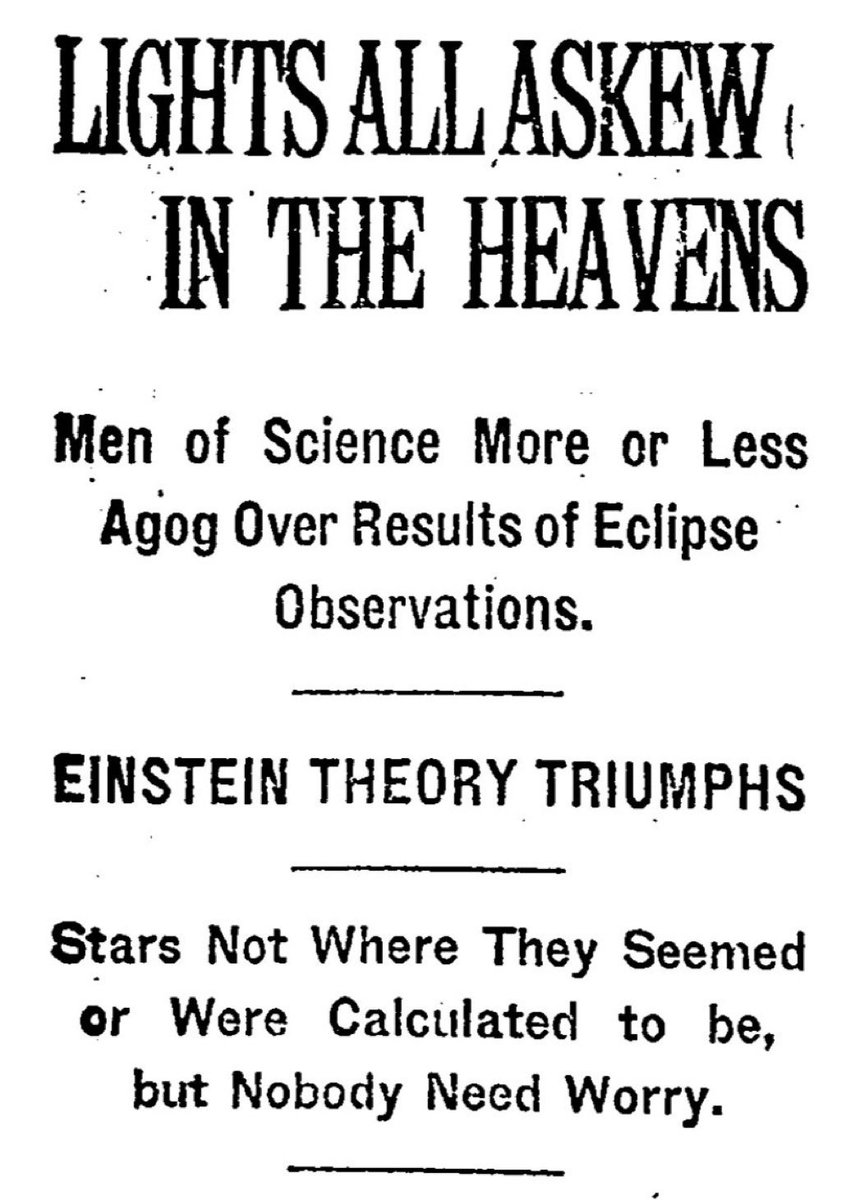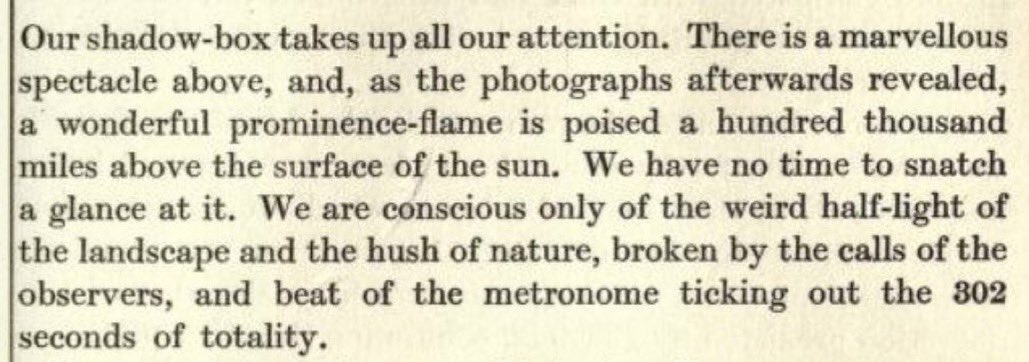The deflection of starlight by the gravitational field of the sun was observed during a solar eclipse #OTD in 1919, an important piece of evidence supporting a central prediction of Einstein& #39;s theory of general relativity.
Image: Arthur Eddington
Image: Arthur Eddington
In 1911, before general relativity, Einstein used the equivalence principle and Newtonian gravity to show that the path followed by light should bend a bit as it passes by a massive body. Light from a distant star that just grazes our sun would be deflected about 0.9 arcseconds.
The moon covers about half a degree on the sky. There are 60 arcminutes per degree, and 60 arcseconds per arcminute. So 0.9 arcseconds is about one two-thousandth of the angular width of the moon. A tiny effect!
Later, after developing general relativity, Einstein realized that the curvature of space near the sun would make the effect twice as large as his earlier prediction. The deflection should be about 1.75 arcseconds. Still tiny!
But to see this miniscule effect, the light must pass very close to the sun. And the sun, being pretty bright, makes it very hard to see...stars. The only hope of measuring the deflection of light by the sun is to wait for an eclipse.
 https://abs.twimg.com/emoji/v2/... draggable="false" alt="❌" title="Cross mark" aria-label="Emoji: Cross mark">: ★
https://abs.twimg.com/emoji/v2/... draggable="false" alt="❌" title="Cross mark" aria-label="Emoji: Cross mark">: ★  https://abs.twimg.com/emoji/v2/... draggable="false" alt="☀️" title="Sun with rays" aria-label="Emoji: Sun with rays">
https://abs.twimg.com/emoji/v2/... draggable="false" alt="☀️" title="Sun with rays" aria-label="Emoji: Sun with rays">  https://abs.twimg.com/emoji/v2/... draggable="false" alt="🔭" title="Telescope" aria-label="Emoji: Telescope">
https://abs.twimg.com/emoji/v2/... draggable="false" alt="🔭" title="Telescope" aria-label="Emoji: Telescope">  https://abs.twimg.com/emoji/v2/... draggable="false" alt="🌍" title="Earth globe europe-africa" aria-label="Emoji: Earth globe europe-africa">
https://abs.twimg.com/emoji/v2/... draggable="false" alt="🌍" title="Earth globe europe-africa" aria-label="Emoji: Earth globe europe-africa">
 https://abs.twimg.com/emoji/v2/... draggable="false" alt="✅" title="White heavy check mark" aria-label="Emoji: White heavy check mark">:
https://abs.twimg.com/emoji/v2/... draggable="false" alt="✅" title="White heavy check mark" aria-label="Emoji: White heavy check mark">:  https://abs.twimg.com/emoji/v2/... draggable="false" alt="⭐" title="Medium star" aria-label="Emoji: Medium star">
https://abs.twimg.com/emoji/v2/... draggable="false" alt="⭐" title="Medium star" aria-label="Emoji: Medium star"> https://abs.twimg.com/emoji/v2/... draggable="false" alt="🌑" title="New moon symbol" aria-label="Emoji: New moon symbol">
https://abs.twimg.com/emoji/v2/... draggable="false" alt="🌑" title="New moon symbol" aria-label="Emoji: New moon symbol">  https://abs.twimg.com/emoji/v2/... draggable="false" alt="🔭" title="Telescope" aria-label="Emoji: Telescope">
https://abs.twimg.com/emoji/v2/... draggable="false" alt="🔭" title="Telescope" aria-label="Emoji: Telescope">  https://abs.twimg.com/emoji/v2/... draggable="false" alt="🌍" title="Earth globe europe-africa" aria-label="Emoji: Earth globe europe-africa">
https://abs.twimg.com/emoji/v2/... draggable="false" alt="🌍" title="Earth globe europe-africa" aria-label="Emoji: Earth globe europe-africa">
(Einstein wrote to astronomer George Hale in 1913, asking if it might be possible to observe stars passing near the sun without an eclipse. Hale patiently explained that, yes, the eclipse really was necessary.)
https://hdl.huntington.org/digital/collection/p15150coll2/id/1846/">https://hdl.huntington.org/digital/c...
https://hdl.huntington.org/digital/collection/p15150coll2/id/1846/">https://hdl.huntington.org/digital/c...
So the Royal Society organized two expeditions to the path of totality for the 1919 eclipse. Andrew Crommelin led a team to Sobral, in northern Brazil, while Arthur Eddington went to the island of Principe, off the west coast of Africa.
The two teams measured the small shifts in the expected positions of a dozen stars near the edge of the eclipsed sun. The data from the Sobral expedition suggested a deflection of around 2 seconds of arc; the Principe data gave about 1.6 seconds of arc.
http://rsta.royalsocietypublishing.org/content/220/571-581/291">https://rsta.royalsocietypublishing.org/content/2...
http://rsta.royalsocietypublishing.org/content/220/571-581/291">https://rsta.royalsocietypublishing.org/content/2...
This dramatic result — close to the prediction of general relativity, and significantly different than what would be expected from just Newtonian gravity and the Equivalence Principle — was a major triumph for Einstein& #39;s theory.
And it drew the attention of the public, as well. When the results were reported at a joint meeting of the Royal Society and Royal Astronomical Society that November, it generated sensational headlines. "Lights All Askew in the Heavens," read the NYT.
I love the bit at the end. "Hey, uh, the stars? So here’s the thing about the stars: I know you’re used to them being in the right place, but... they definitely are not. No no no, don& #39;t panic, it’s okay. There& #39;s a reason. But we checked and they’re for sure in the wrong place.”
The description given by Eddington in his book "Space, Time and Gravitation: An Outline of the General Relativity Theory" really captures the intensity and excitement of those five minutes of totality on May 29, 1919.
#page/114/mode/2up">https://archive.org/stream/spacetimegravita00eddirich #page/114/mode/2up">https://archive.org/stream/sp...
#page/114/mode/2up">https://archive.org/stream/spacetimegravita00eddirich #page/114/mode/2up">https://archive.org/stream/sp...

 Read on Twitter
Read on Twitter